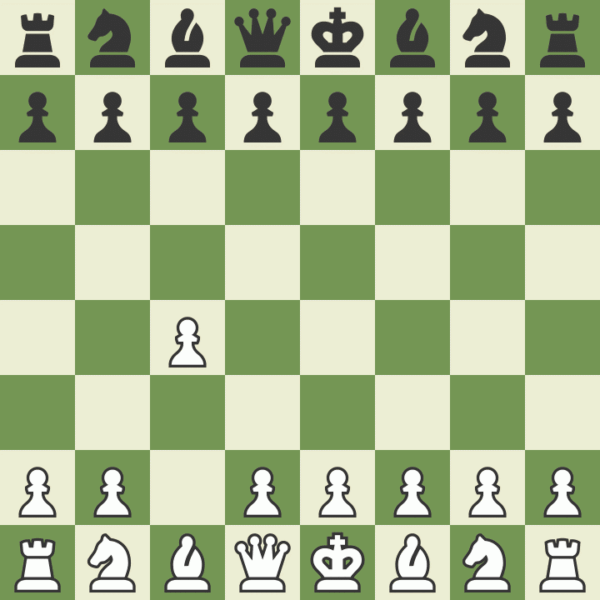English Opening Chess is a flexible and strategic opening widely adopted by beginners and advanced players. It starts with move 1.c4, defining the character of the opening- the one that controls the center without its immediate occupation. Named after the English chess master Howard Staunton, this opening may lead to various setups depending on how your opponent responds. In this article, we will look into the basic concepts of English Opening Chess, some of the popular variations, and how you can apply them to improve your game.

The English Opening Chess begins with the move 1.c4-playing a pawn to the c4 square. This move is to eye the d5 square and give you central control without overly committing to your pawns. Contrary to most well-known openings, such as the King’s Pawn Opening, 1.e4, or Queen’s Pawn Opening, 1.d4, the English Opening Chess is hypermodern. You aim to seek influence in the center from a distance.
Key Ideas Behind the English Opening
- Flexibility: The English Opening Chess game offers flexibility, as it can be transposed into other well-known openings, such as the King’s Indian Defense, the Symmetrical Defense, and the Queen’s Gambit.
- Control of the Center: The pawn on c4 controls the crucial d5 square while allowing for the development of your pieces, particularly the knight on b1 (which can move to c3) and the bishop on g2 (via a fianchetto setup).
- Positional Play: The English Opening Chess is often played by players who prefer positional and strategic play rather than sharp tactical battles right from the start.
How to Play the English Opening Chess
The English Opening Chess can lead to everything from Open Game positions to symmetrical formations and from sharp, tactical play to positional maneuvering, depending upon how both sides continue. Below are some common responses you might encounter and how you can play against them:
Symmetrical Variation, 1.c5
The Symmetrical Variation is one of the most straightforward responses to the English Opening Chess. In the case of 1.c4, Black symmetrically responds with 1.c5 by mirroring White’s pawn structure. This generally leads to a game that develops more slowly and where strategy often predominates, basically with balanced chances for both sides. White can continue by developing his knights with 2.Nc3 or fianchetto the kingside bishop with 2.g3 in preparation for the fight over the center.
White’s Plan: In this line, White can maintain a healthy pawn structure; then, after some robust development, he can hope for a slow but eventual expansion on the queenside via moves such as b4 and a3.
Reversed Sicilian 1.e5
Another popular reaction to the English Opening Chess is the Reverse Sicilian. It begins with Black’s immediate fight for the center: 1.e5. It is similar to the Sicilian Defense but with the colors reversed. White usually replies with 2.Nc3, preparing to put pressure on squares d5 and f5.
White’s Plan: In this Variation, White frequently follows Black’s pattern in the Sicilian Defense and develops the knight to f3, fianchettos the bishop on the kingside with g3, and Bg2. He can also make the moves d3 and e4 at an appropriate moment to claim space in the center.
King’s Indian Defense (1.Nf6)
The King’s Indian Defence against the English Opening is a hypermodern setup. Black develops the knight to f6 and prepares to fianchetto the kingside bishop. White can adopt a Botvinnik System, with pawns on c4, d3, and e4, fianchetto the kingside bishop, and prepare a slow build-up in the center.
White’s Plan: White wants to expand the center gradually but always worries about Black’s kingside pawn storm, as is often seen in the King’s Indian Defense. The white queenside pawns can easily move forward to gain space and neutralize Black’s attacking pawns.
The Four Knights Variation (1.Nf6 2.Nc3 Nc6 3.Nf3)
In this line, Black responds with the early development of both knights, which White duly follows. We can expect the game to transpose to a classical opening, developing the pieces and competing for the center.
White’s plan: This is balanced. White can fianchetto the bishop with g3 and Bg2 to secure the long diagonal. Alternatively, White can play for a Queen’s Gambit-type structure by pushing d4 later.
Advantages of Playing the English Opening Chess
Surprise Factor: Not all players are as accustomed to English Opening Chess as mainstream openings such as the Ruy-Lopez or the Italian Game. This may give you an edge when playing casual games or tournaments.
Transposition Nature: The English Opening Chess is highly transposition. Depending on the opponent’s responses, you might veer into other openings. That makes it an excellent weapon because you are keeping them guessing.
Positional Mastery: With English Chess Opening, if you are the type that wants a more gradual positional game, you can manage to control the center from afar and mount your forces without immediately engaging in direct combat.
Common Blunders in the English Opening Chess
Even though the English Opening Chess is a solid choice for many players, pitfalls can still catch you off guard. Below are a few common mistakes to avoid:
Overextending Early: The English Opening is a positional opening, so overextending by pushing lots of pawns without proper piece development can be quickly done. Always balance pawn moves with the timely development of knights and bishops.
Tendency to neglect the center: Though the English Opening provides indirect control of the center, you should not entirely dispense with the concept of central control. It is viewed that moves such as d3 and e4 or d4 reinforce your central structure.
Neglecting King Safety: Many players who become obsessed with playing on the queenside can sometimes postpone casting for far too long. So, ensure your king is safe by early casting, mainly if sharp positions arise.
Conclusion
The versatility of the English Opening is powerful and flexible. It immediately offers you the chance to play for strategic control without making any pawn commitment to the center. Whether you add this opening to your repertoire for the first time and you’re a beginner or an advanced player who wants to surprise your opponent, the benefits of the English Opening are endless. Learn to make English Opening one of your core chess strategies by using the key ideas and popular variations and trying to avoid common mistakes.








